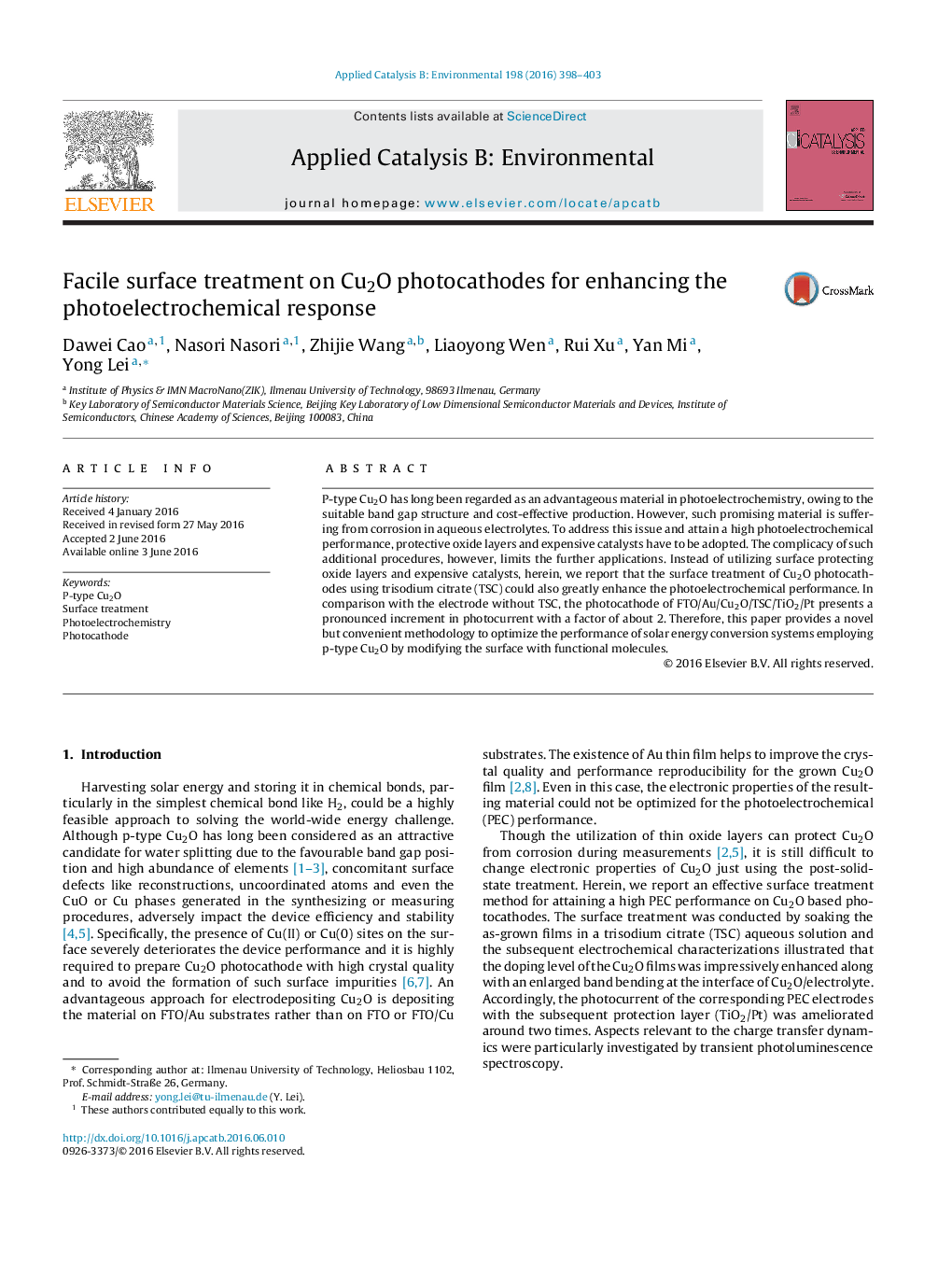| Article ID | Journal | Published Year | Pages | File Type |
|---|---|---|---|---|
| 44748 | Applied Catalysis B: Environmental | 2016 | 6 Pages |
•Surface treatment for Cu2O photocathodes using trisodium citrate.•Establish surface modification to optimize the efficiency of energy conversion.•Get rid of using complicated surface passivating procedures and catalysts.•Obtained photocurrent approaches a very high value in Cu2O-based photocathodes.
P-type Cu2O has long been regarded as an advantageous material in photoelectrochemistry, owing to the suitable band gap structure and cost-effective production. However, such promising material is suffering from corrosion in aqueous electrolytes. To address this issue and attain a high photoelectrochemical performance, protective oxide layers and expensive catalysts have to be adopted. The complicacy of such additional procedures, however, limits the further applications. Instead of utilizing surface protecting oxide layers and expensive catalysts, herein, we report that the surface treatment of Cu2O photocathodes using trisodium citrate (TSC) could also greatly enhance the photoelectrochemical performance. In comparison with the electrode without TSC, the photocathode of FTO/Au/Cu2O/TSC/TiO2/Pt presents a pronounced increment in photocurrent with a factor of about 2. Therefore, this paper provides a novel but convenient methodology to optimize the performance of solar energy conversion systems employing p-type Cu2O by modifying the surface with functional molecules.
Graphical abstractInstead of utilizing surface protecting oxide layers and expensive catalysts, we report that the surface treatment of Cu2O photocathodes using trisodium citrate (TSC) could also greatly enhance the photoelectrochemical performance.Figure optionsDownload full-size imageDownload as PowerPoint slide
